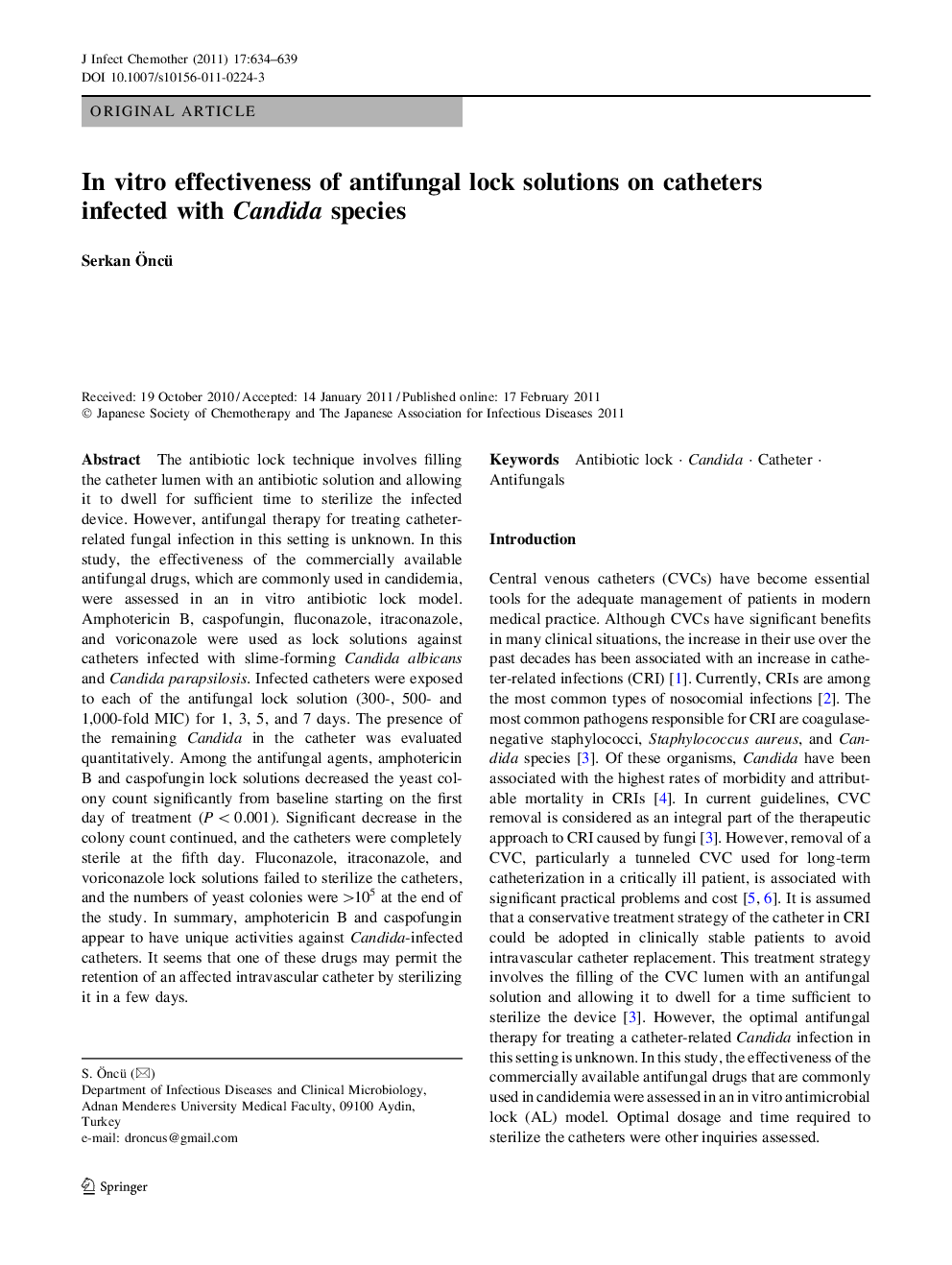| کد مقاله | کد نشریه | سال انتشار | مقاله انگلیسی | نسخه تمام متن |
|---|---|---|---|---|
| 6124178 | 1219965 | 2011 | 6 صفحه PDF | دانلود رایگان |
عنوان انگلیسی مقاله ISI
In vitro effectiveness of antifungal lock solutions on catheters infected with Candida species
دانلود مقاله + سفارش ترجمه
دانلود مقاله ISI انگلیسی
رایگان برای ایرانیان
موضوعات مرتبط
علوم زیستی و بیوفناوری
ایمنی شناسی و میکروب شناسی
میکروبیولوژی و بیوتکنولوژی کاربردی
پیش نمایش صفحه اول مقاله

چکیده انگلیسی
The antibiotic lock technique involves filling the catheter lumen with an antibiotic solution and allowing it to dwell for sufficient time to sterilize the infected device. However, antifungal therapy for treating catheter-related fungal infection in this setting is unknown. In this study, the effectiveness of the commercially available antifungal drugs, which are commonly used in candidemia, were assessed in an in vitro antibiotic lock model. Amphotericin B, caspofungin, fluconazole, itraconazole, and voriconazole were used as lock solutions against catheters infected with slime-forming Candida albicans and Candida parapsilosis. Infected catheters were exposed to each of the antifungal lock solution (300-, 500- and 1,000-fold MIC) for 1, 3, 5, and 7 days. The presence of the remaining Candida in the catheter was evaluated quantitatively. Among the antifungal agents, amphotericin B and caspofungin lock solutions decreased the yeast colony count significantly from baseline starting on the first day of treatment (PÂ <Â 0.001). Significant decrease in the colony count continued, and the catheters were completely sterile at the fifth day. Fluconazole, itraconazole, and voriconazole lock solutions failed to sterilize the catheters, and the numbers of yeast colonies were >105 at the end of the study. In summary, amphotericin B and caspofungin appear to have unique activities against Candida-infected catheters. It seems that one of these drugs may permit the retention of an affected intravascular catheter by sterilizing it in a few days.
ناشر
Database: Elsevier - ScienceDirect (ساینس دایرکت)
Journal: Journal of Infection and Chemotherapy - Volume 17, Issue 5, 2011, Pages 634-639
Journal: Journal of Infection and Chemotherapy - Volume 17, Issue 5, 2011, Pages 634-639
نویسندگان
Serkan Ãncü,